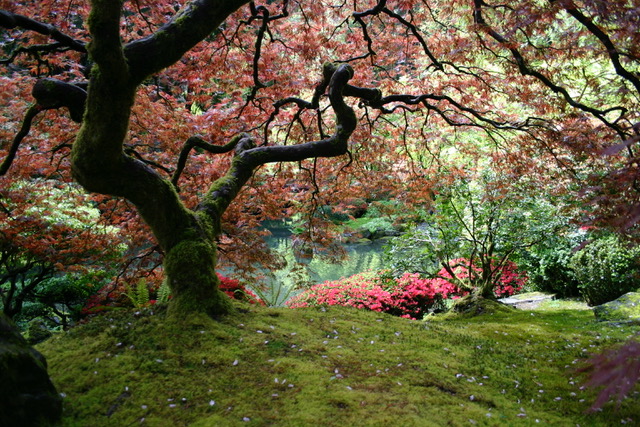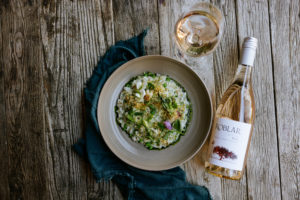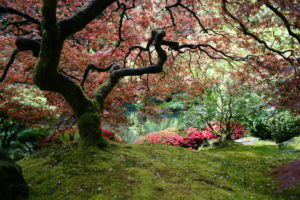
The art of garden design: wabi-sabi
by Lisa Cullen
Have you heard about wabi sabi? If the term is unfamiliar, read on!
Wabi sabi is not what to order at a Japanese restaurant, it’s a design trend.
Sometimes called the next feng shui, wabi sabi has its roots in Zen Buddhism. It’s an art form that celebrates the aesthetic character of things imperfect, incomplete, and impermanent. The crack in your old flowerpot, for example, sets it apart from thousands of others of the same design, the weathered stone of your patio makes it unique and something to be celebrated, not replaced.
The wabi sabi aesthetic
Wabi and sabi are two key Japanese aesthetic concepts. Wabi means things fresh and simple, like quietude and rustic beauty. It includes things in nature and those made by man and includes small flaws, whether intentional or accidental. Sabi is the element of time showing itself, especially referring to things whose beauty stems from age. It’s moss growing over the roots of a tree, stones worn from years of use, an old garden shed in the corner or a cracked and repaired pot. Over time, these two terms combined to form a new word, wabi sabi, which includes these two ideas. It also suggests things of high quality. There is a Japanese expression suggesting that someone who makes poor quality things is worse than a thief because these things don’t last or provide true satisfaction.
Wabi sabi in garden design
Wabi sabi garden design works with nature and doesn’t fight the natural order of things. Elements in this kind of garden would be asymmetry, quality, unconventionality, and sustainability. Durable elements that last in nature as well in the heart of the gardener won’t need replacing for a very long time, if ever, and in fact get better with age. Here are some keys to apply wabi sabi in your garden:
Choose plants that are compatible in nature, like a gnarled tree trunk, whose leaves are allowed to remain on the earth, and plants apparently un-pruned allowed to grow into each other.
Allowing plants to look as if “they just grew that way” is the wabi sabi way of gardening. In wabi sabi, plants and trees are allowed to grow in their natural shapes as if no pruning were done at all. No cubes and balls in this garden.
Strive for asymmetry and imbalance. Allow leaves to accumulate on the ground and plants to spill over into the garden paths. Imagine paths in nature and try to emulate that.
Recycle and reuse. Shop at estate sales for garden décor with patina that can only come from use and age. Experiment with mismatched pots and plantings; take your inspiration from nature’s color palette. An old garden shed, spruced up a bit with a faux finish, can become one of the featured elements of your garden.
Let nature be your guide when it comes to selecting materials use natural materials that have unique qualities, like recycled wood, natural stone, and gravel. Don’t replace a fountain with cracks, rejoice in its uniqueness. Seek out one-of-a-kind garden elements that will get better with age.
Local inspiration
I highly recommend getting out and touring some local gardens that celebrate the wabi sabi garden way. The Santa Barbara Botanic Gardens, Casa del Herrero and Lotusland as well as the gardens at The San Ysidro Ranch are unparalleled when it comes to the wabi sabi garden philosophy. All these local gardens celebrate getting better with age and allow nature to take the wheel.
Pro tip: Be sure to splurge on your imperfections, asymmetry, and uniqueness. It’s the wabi sabi way.
Lisa Cullen, landscape designer and organic gardener, owns Montecito Landscape with her husband, Chris. She can be reached at 805.969.3984 or www.montecitolandscape.com








